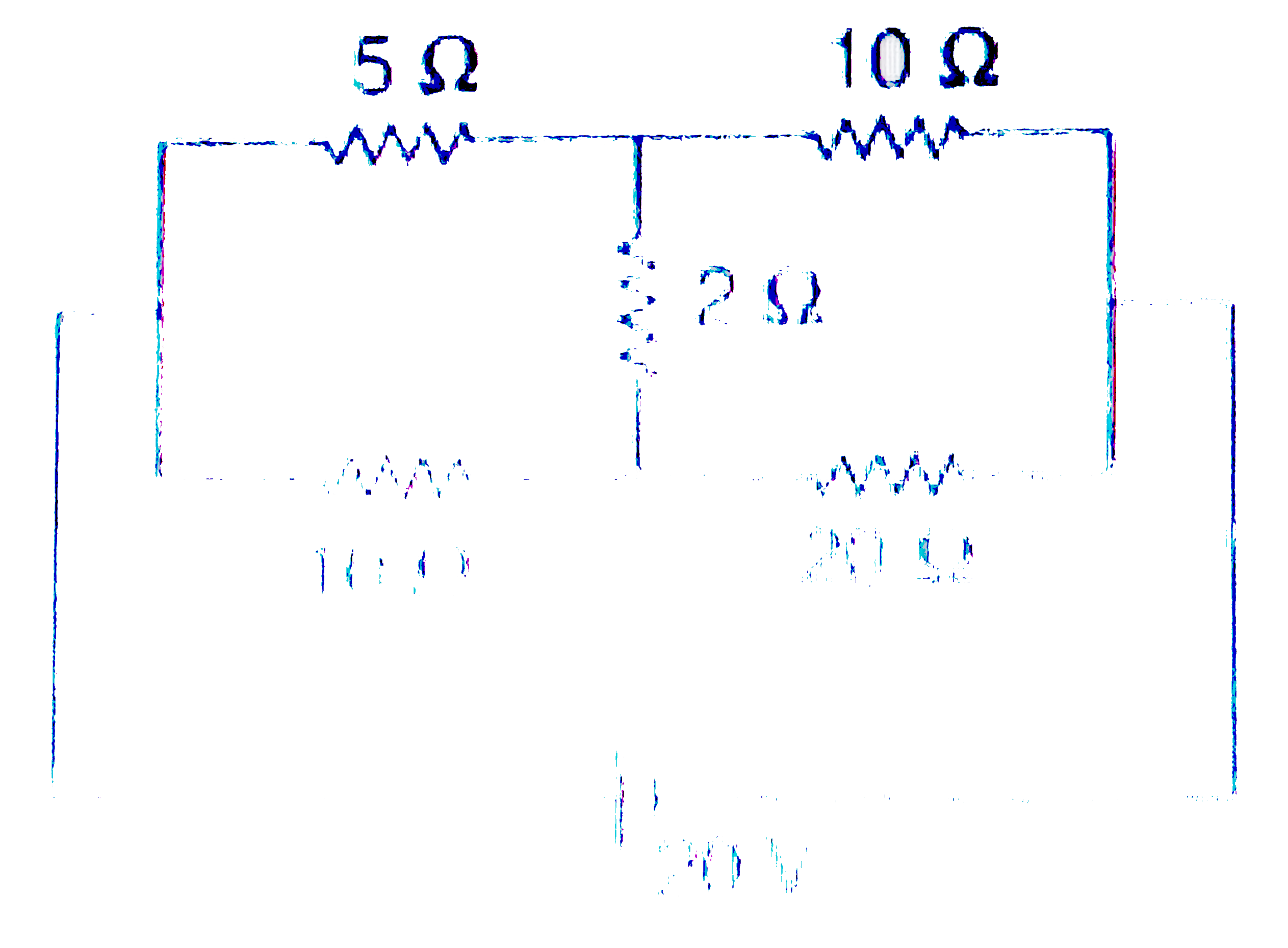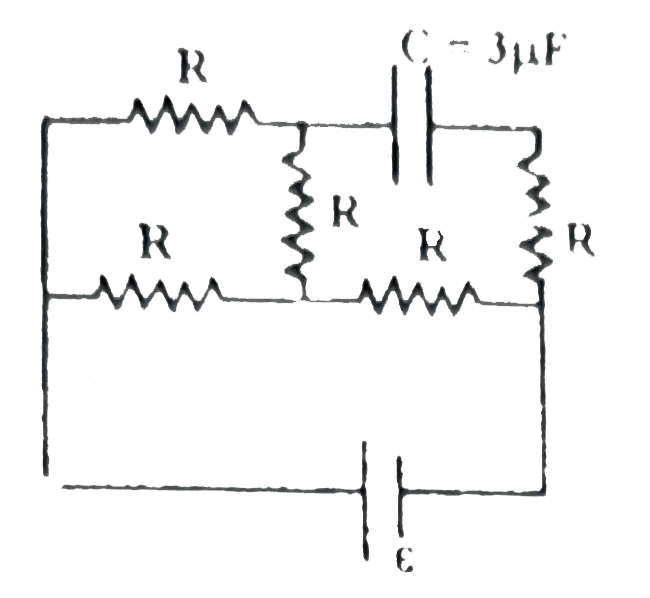Current P through a certain non-metallic rod is given as i0=0.2V32 where V is potential difference across it. The rod is connected in series with a resistance to a 12 volt ideal bettery. What should be resistance ( in Ω) so that power dissipated in the resistance is twice that of rod.
Pres=2Prod
(12−V)i=2Vi
V=4 volt
I2R=2vi
(0.2)2V3R=2V(0.2)V3/2
R=5Ω
Topper's Solved these Questions
Similar Questions
The current I through a rod of a certain metallic oxide is given by I=0.2V5/2, where V is the potential difference across it. The rod is connected in series with a resistance to a 6V battery of negligible internal resistance. What value should the series resistance have so that:
(i) the current in the circuit is 0.44
(ii) the power dissipated in the rod is twice that dissipated in the resistance.View Solutionthe current developed in a real conductor is given I=aV1/2, where V is the potential difference acid the conductor. When it is connected with resistance of RΩ in series with a battery of 6 volt shown in the figure , the power developed in conductor is twice the power generated in resistance of RΩ . find the value of R.[a=0.2AVolt−1/2]
 View Solution
View Solution
Knowledge Check
- Question 1 - Select One
The internal resistance of a 2.1V cell which gives a current 0.2A through a resistance of 10Ω
A0.2ΩB0.5ΩC0.8ΩD1.0Ω - Question 2 - Select One
In the given circuit the potential difference across the capacitor is 12V in steady state. Each resistor have 3Ω resistance. The emf of the ideal battery is
 A15VB9VC12VD24V
A15VB9VC12VD24V - Question 3 - Select One
What resistance should be connected in series with a 0.5 A ammeter to convert it into a 15 V voltmeter ? Given that the resistance of ammeter.
A2ΩB5ΩC15ΩDnone of these
The internal resistance of a 2.1 V cell which gives a current of 0.2A through a resistance of 10Ω is
View SolutionIn the given circuit, the potential difference across the capacitor is 12V. Each resistance is of 3Ω. The cell is ideal. The emf of the cell is
 View Solution
View SolutionA diode having potential difference 0.5V across its junction which does not depend on current, is connected in series with resistance of 20Ω across source. If 0.1A passes through resistance then what is the voltage of the source?
View SolutionThe potential difference across terminals of cell of 20 V and r=2Ω connected to 8Ω external resistance is
View SolutionThe potential difference V across and the current I flowing through an instrument in an AC circuit are given by:
V=5cosωt volt
I=2sinωt Amp.View Solution

